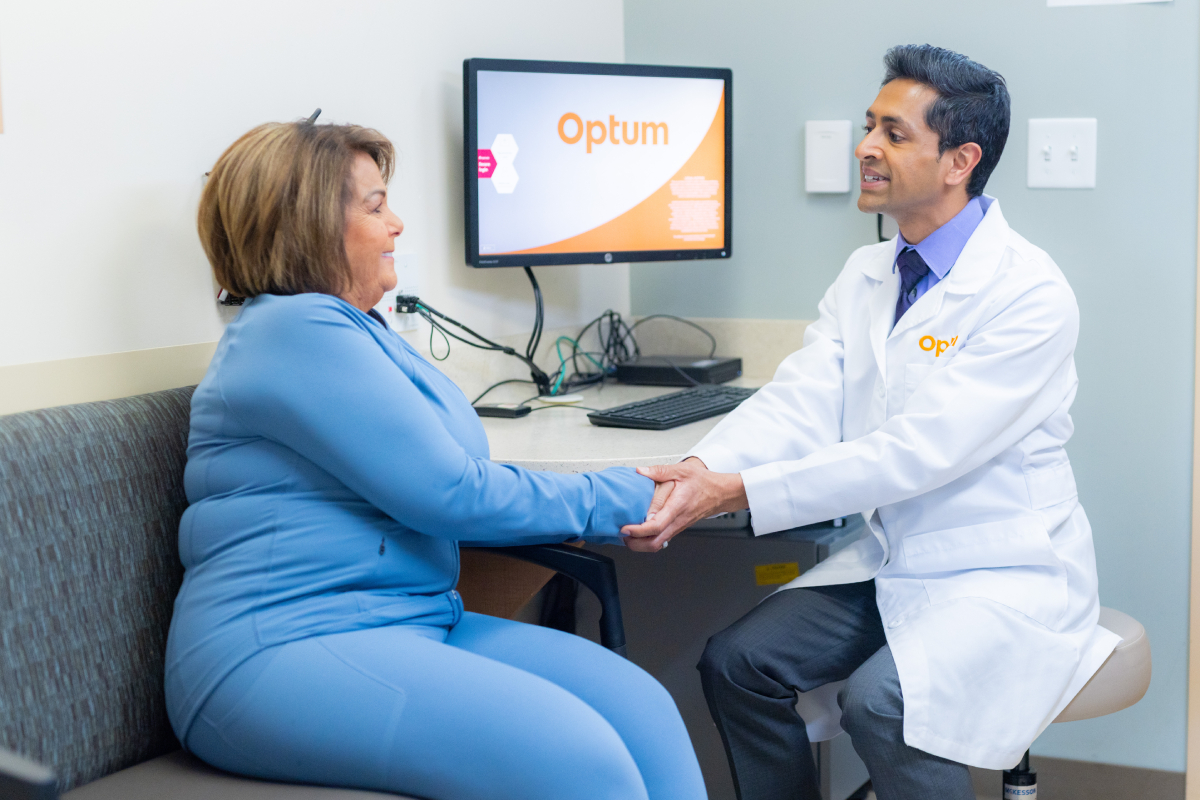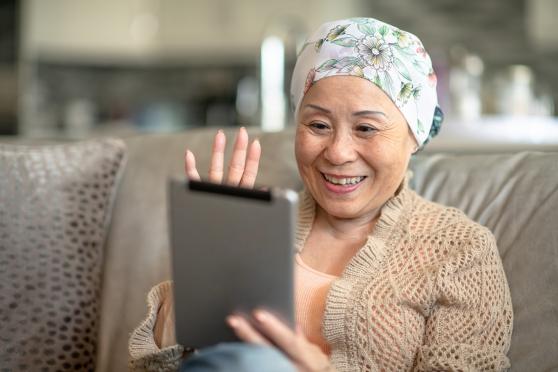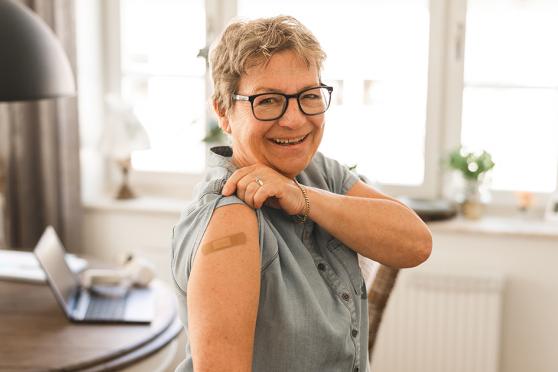
Cold and flu hotspots: The germiest places and how to stay safe

Germs can lurk in crowded public spaces like the bus and the gym. Here’s what to know to avoid getting sick.
No one likes getting sick. It’s never fun to be stuck at home with a headache, stuffy nose, sore throat or worse. Plus, when you’re sick, it often keeps you away from your friends and family. You don’t want to get them sick.
If you’re 65 or older, getting sick may be a bigger deal, whether it’s from the common cold, the flu or COVID-19. That’s because you’re at higher risk of developing complications from whatever germs you picked up, says Christopher B. Valentine, MD. He’s a family physician and Optum medical director in Draper, Utah.
With age, “your immune system often does not respond in the same way,” Dr. Valentine says. That means you might not get better as quickly as you did when you were younger. So, for example, if you get the flu, it could lead to something more serious. It could even land you in the hospital.1
While it’s impossible to avoid all germs, you can reduce your exposure. For starters, avoid germy places at risky times of the day. You can also follow habits that help keep you away from harmful germs.

Where am I at the highest risk of getting a cold, the flu or COVID-19?
Places where there are big crowds and low air circulation are some of the riskiest, explains Dr. Valentine. That’s because viruses and bacteria can travel through the air in tiny droplets.
For example, the virus that causes the flu can be released into the air when people cough, sneeze, talk or even quietly breathe near you.2 And you can breathe in these droplets, which are absorbed by your nose and mouth.3
Droplets can also land on surfaces such as doorknobs, desks and railings. When they do, they can stick around for hours.4
Let’s say you’re at a friend’s house and touch a railing someone sneezed or coughed on a few minutes beforehand. “It really just takes someone touching one of these surfaces and then touching their face in order for germs to be transmitted into their system,” says Dr. Valentine.
Here’s a look at how long certain germs can stick around:4
- Cold germs can live on your hands for up to one hour. When they land on other surfaces, they lose effectiveness after 24 hours.
- The flu is similar. It can live for 24 to 48 hours on hard surfaces.
- The virus that causes COVID-19 can live from a few hours up to a few days.
Indoor spaces, where there is less ventilation, are riskier than outdoor spaces.5 What are the germiest indoor places? Find out below. Plus, learn ways to stay away from harmful germs in all of these places.
Hotspot #1: Public transportation
This is a big one, says Dr. Valentine. If you take the bus, subway or train regularly, you know it can get crowded quickly in a small space. That can be even worse if it’s rush hour. Germs can pass between people easily in these situations.5
Planes, however, may not be as risky as they seem. They often have high-tech systems that can help filter and remove germs from the air inside the cabin.6
Solutions: If you must use public transportation, try using it at nonpeak hours to avoid crowds. Carry hand sanitizer in your bag and use it after you step off the bus or train. Wearing a well-fitting mask can be a good way to help avoid germs in the air. The best masks are N95s, according to the Centers for Disease Control and Prevention.7 The next best are KN95s and well-fitting disposable surgical masks.
Hotspot #2: The gym
Maybe you regularly hit your gym to lift weights or walk on the treadmill. Gyms can get crowded fast. That can make for a lot of indoor huffing, puffing and grunting — all of which can send germy droplets into the air.8
Gyms typically also rely on shared equipment such as stationary bikes, weights and resistance machines. These have smooth surfaces where germs can remain active.
But don’t let this put you off the gym entirely. Daily workouts can improve your overall health in many ways.9
Solutions: If you can go to your gym during off-peak hours, that’ll help you avoid the crowds. And some of the germs.8 Wearing a mask is also an option. And if someone just used your favorite machine, ask them to disinfect it before you use it. Or just do it yourself.
It can get sweaty, and you may want to reach up and wipe your brow with your hand. But touching your face isn’t a good idea when your hands aren’t clean.10 If you have to touch your face, do it after you’ve washed your hands.
When you wash, be sure to scrub. Some people dab on the soap and rinse it off right away. “That’s just not going to do it,” says Dr. Valentine. “You should be washing for at least 20 seconds, ensuring that you’re cleaning between your fingers and being very thorough with soap and water.”
Regular handwashing can be difficult when you’re in public. Using hand sanitizer is the next best thing.11 Dr. Valentine recommends using one with at least 60% alcohol.
Hotspot #3: Parties
Social connections are important for your health and well-being. You don’t need to turn down that invitation to a birthday bash or retirement party, but it’s a good idea to take a few precautions.
At parties, you’re often talking to people face to face. And you might be talking extra loud if it’s hard to hear. The thing is, speaking can send nasty germs into the air. If you’re in a place where people are doing this for long periods of time, you may be at higher risk of infection.
Solutions: You can’t always avoid crowds. But when you can, try to hang out in a spot where there aren’t as many people. If there are fewer people sharing your air, you reduce the risk of breathing in germs.4 You might also want to go for a shorter time. If that retirement party is going to last for hours, think about showing up early and leaving early.
Hotspot #4: Theaters
Catching the latest movie blockbuster or a live play? Theaters can get crowded quickly. And movies and plays can last for hours. During cold and flu season, that can increase your risk of exposure to all kinds of germs.5
Solutions: Wearing a mask is a great way to help steer clear of germs.7 And if your chair has armrests, think about using a disinfectant wipe on them before you sit down. You could also pack a small bottle of hand sanitizer in your bag.
Germ hotspot #5: Places of worship
Churches, synagogues, mosques and other places of worship are similar to theaters. They bring large groups together for long periods of time, which can increase your exposure to germs.5
Solutions: Again, consider wearing a mask. And if you pick up books or hold the door for someone, use hand sanitizer or wash your hands.
Looking for more great tips that can help you stay healthy all year long? Sign up for our Optum newsletter today.
How else can I protect myself from getting sick?
Staying away from germs in public isn’t always easy. Here are two other ways to help protect yourself:
Stay up to date on your vaccines. Did you get your COVID-19 booster and flu shots yet? If not, know that staying up to date on your vaccines can help you avoid unnecessary risk.12 That’s because a virus that may have led to a few days of coughing in your 30s might turn into pneumonia in your 60s or 70s.13 Talk to your Optum doctor about scheduling shots.
“What we’re trying to do is support and provide a head start for your immune system,” says Dr. Valentine. Even if you do get infected, the symptoms will be less severe.
See doctors virtually wherever possible. These days, many health care providers offer virtual care (you might also see this called telehealth or telemedicine).14 That’s where you talk to your doctor over the phone or on a video chat. You can do so with your smartphone, computer or tablet.15 Talk to your Optum doctor about whether telehealth is an option.
A virtual visit can also save you the time it takes to travel to your doctor’s office. And it can help you avoid spending time in a waiting room, where other people may be sick. Plus, if you’re already sick, it can help you avoid infecting others.
While it’s impossible to avoid all germs all the time, you can cut your risk of a serious infection. The best way to do this is to avoid high-risk places at peak times and practice healthy habits. Talk to your Optum Care team about other ways to keep from getting sick. They’re there to help you do the things you love—but stay healthy doing them.
Sources
- Centers for Disease Control and Prevention. Flu and people 65 years and older. Last reviewed August 25, 2022. Accessed January 5, 2024.
- Centers for Disease Control and Prevention. Key facts about influenza (flu). Last updated October 22, 2023. Accessed February 15, 2024.
- Mayo Clinic. COVID-19, cold, allergies and the flu: What are the differences? Last updated November 3, 2022. Accessed January 5, 2024.
- Cleveland Clinic. Germs. Last reviewed November 28, 2022. Accessed January 5, 2024.
- Centers for Disease Control and Prevention. Ventilation in buildings. Last updated May 12, 2023. Accessed January 5, 2024.
- World Health Organization. Coronavirus disease (COVID-19): Ventilation and air conditioning. Published December 23, 2021. Accessed January 5, 2024.
- Centers for Disease Control and Prevention. Types of masks and respirators. Last updated May 11, 2023. Accessed January 5, 2024.
- Cleveland Clinic. How to stay safe at the gym during cold and flu season. Published October 7, 2020. Accessed January 5, 2024.
- Centers for Disease Control and Prevention. Health benefits of physical activity for adults. January 2021. Accessed February 12, 2024.
- Centers for Disease Control and Prevention. Coughing and sneezing. Last reviewed October 10, 2023. Accessed January 5, 2024.
- Centers for Disease Control and Prevention. When and how to wash your hands. Last reviewed November 15, 2022. Accessed January 5, 2024.
- Centers for Disease Control and Prevention. What vaccines are recommended for you. Last reviewed September 8, 2023. Accessed January 5, 2024.
- Centers for Disease Control and Prevention. Risk factors for pneumonia. Last reviewed September 30, 2022. Accessed January 5, 2024.
- Medicare.gov. Virtual check-ins. Accessed January 5, 2024.
- U.S. Department of Health and Human Services. What is telehealth? Last updated July 27, 2023. Accessed January 5, 2024.
© 2024 Optum, Inc. All rights reserved. Do not reproduce, transmit or modify any information or content on this website in any form or by any means without the express written permission of Optum.
The information featured in this site is general in nature. The site provides health information designed to complement your personal health management. It does not provide medical advice or health services and is not meant to replace professional advice or imply coverage of specific clinical services or products. The inclusion of links to other websites does not imply any endorsement of the material on such websites.
Stock photo. Posed by model.



